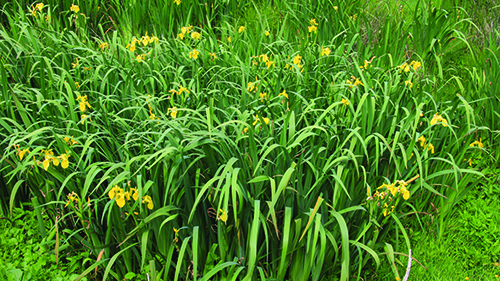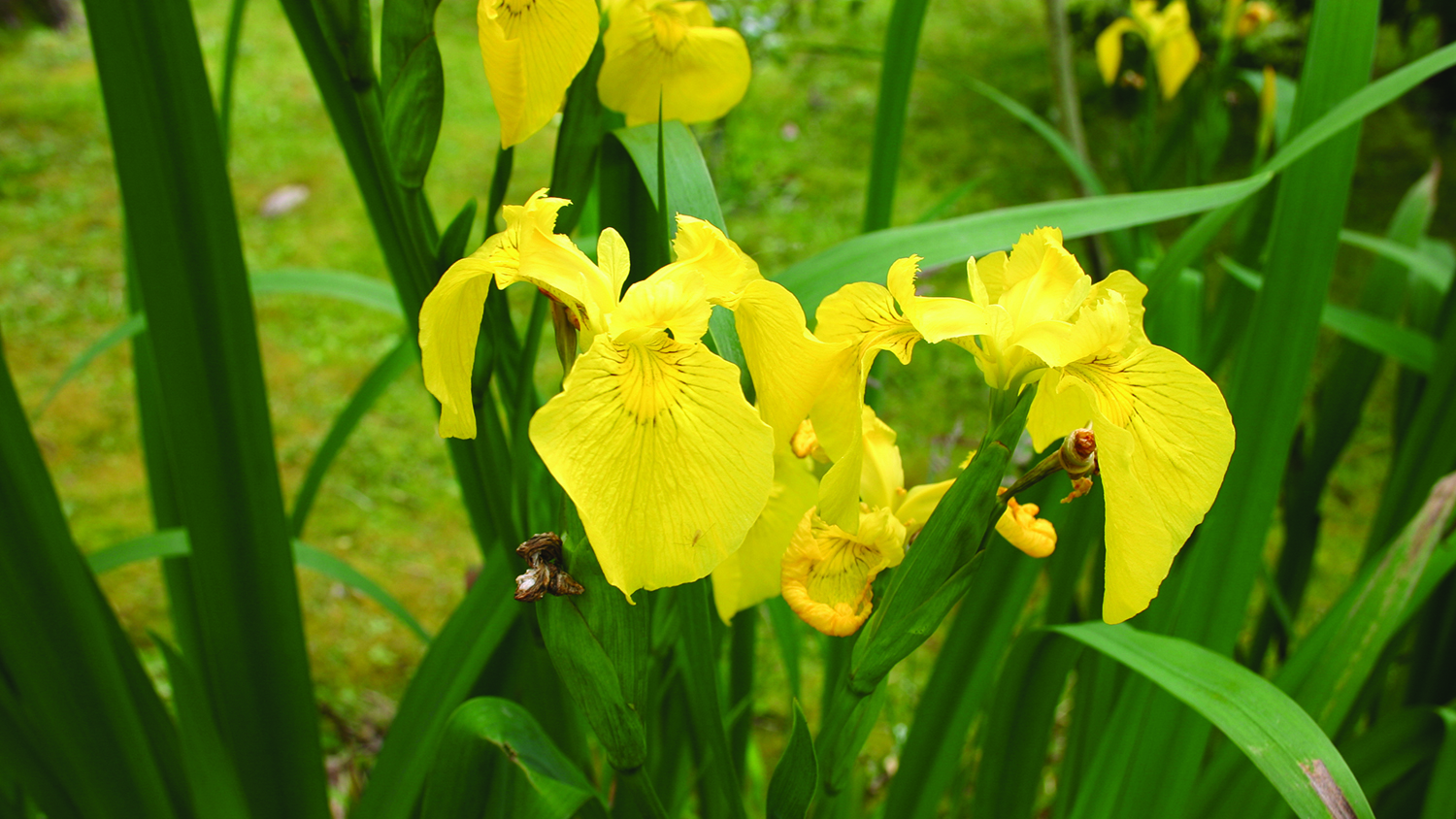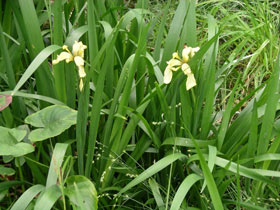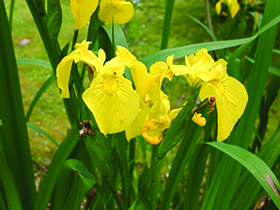| Management programme |
|
Progressive containment (Taupō and Rotorua districts within the Waikato region) Site-led (Wetlands) |
| Objectives |
|
Reduce the amount of yellow flag iris and limit the locations that have it and reduce its impacts in wetlands that are free of or being cleared of it within the Waikato region. |
| Impacts |
|
Economic, biodiversity, water quantity/quality, social and cultural wellbeing, amenity/recreation, animal welfare |
Yellow flag iris is native to Europe, Asia and North Africa. Introduced to New Zealand as an ornamental plant, it has since spread to sites throughout New Zealand. A semi-aquatic species, it is a particular problem on stream, river and wetland margins and in swampy ground.

What does it look like?
A perennial iris that grows in dense, leafy clumps to 1.5m tall.
Flowers
- Large yellow flowers up to 12cm across, typically iris-like in form.
- Each flower only lasts a day.
- Flower from September to December.
Fruit/seeds
- Large green seed capsules (2 x 5cm) that contain many smooth, brown flattened disc-like seeds.
- Fruit present from December to March.
- Seeds float on water.
Leaves/steams/rhizomes
- Broad flat sword shaped leaves (2cm-3cm wide) from a reddish base.
- Leaves are 20-30mm wide, with a distinct mid-rib.
- Leaves form a fan shape.
- Plants growing over water can form rafts of floating rhizomes.
Similar plants
Stinking iris (Iris foetidissima) is related but is not aquatic. It is a smaller plant with dull yellow-green flowers and seed capsules that split to reveal many bright red round seeds (5mm). Its crushed leaves have a foul smell.
|
Stinking iris |
Yellow flag iris |
Why is it a pest?
Yellow flag iris forms dense stands that can displace native species, restrict access for recreational activities, impede water flow, and impact on the mauri of waterbodies. Most infestations are the result of deliberate planting, but it can also spread via seed or by fragmentation of root rhizomes. It can also invade and displace low-lying pasture and is toxic to livestock. Yellow flag iris is tolerant of salinity, frost, flooding and drought, high-low fertility, many soil types, and damage.
The largest established infestations grow on both sides of the Waikato River, particularly downstream of Hamilton, but the species has also established elsewhere.
Control methods
Physical control
Plants identified in gardens should be dug out. Ensure all root fragments are removed and disposed of at a refuse transfer station.
Herbicide control
Cut and inject
Smaller infestations may be controlled by ‘injecting’ glyphosate or metsulfuron herbicide into the rhizome (fleshy root).
Spray application
'Weed wipe' or spray with glyphosate or metsulfuron plus a penetrant.
Safety when using herbicides
- Follow the instructions on the manufacturer’s label.
- Always wear protective clothing.
- Always minimise the risk to your other plants.
- Contact the supplier for further advice.
Summary of herbicides and application methods for control
| Herbicide | Application |
| Glyphosate or metsulfuron plus a penetrant | Spray application - weed wipe |
| Glyphosate or metsulfuron | Cut and inject |
| Herbicide rules will apply. You may need to notify neighbours if spraying. The Waikato Regional Plan explains the agrichemical (herbicides) use rule in section 6.2 | |
| If applying herbicide over water, a resource consent may be required. Please check with Waikato Regional Council before you begin. | |
Management
After initial control, it’s important to:
- clean out the site again at least annually to control regrowth
- stop weeds invading by replanting with non-pest plants (preferably native plants) once regrowth is no longer a problem.
More information
Advice
- For advice and additional information on control methods, call our pest plant staff on freephone 0800 800 401.
- Chemical company representatives, farm supply stores, garden centres or the Weedbusters website can also be good sources for advice.
Publications
The following publications are available for download or from Waikato Regional Council. Contact us to request a copy (freephone 0800 800 401).








To ask for help or report a problem, contact us
Tell us how we can improve the information on this page. (optional)